What’s in the Sky in May
May
- 6th Peak 07:00hrs AEST eta Aquariids (ETA) Active from April 19th to May 28th, 2024 but high numbers can be seen either side of this date. The Eta Aquariids are a strong shower when viewed from the southern tropics. From the equator northward, they usually only produce medium rates of 10-30 per hour just before dawn. Activity is good for a week centered the night of maximum activity. These are swift meteors that produce a high percentage of persistent trains, but few fireballs. Parent body is Comet 1P/Halley
Shower details – Radiant: 22:32 -1° – ZHR: 50 can very from 40-85) in a darksky – Velocity: 42 miles/sec (swift – 66.9km/sec) – Parent Object: 1P/HalleyOn this night, the moon is a waning crescent 28.03 days old and will be 6% full.The meteors are only visible in the hours before dawn essentially from our southern hemisphere sites and is one of the best showers for southern observers.
This year there is no moonlight interference around the maximum period (New Moon on May 8). IMO analyses of visual data collected since 1984 have shown that ZHRs are generally above 30
in the period May 3–10. An often claimed variability of the peak rates associated with Jupiter’s orbital period close to 12 years has not been confirmed in a recent study (Egal et al., 2020)
using optical and radar data. However, there might be enhanced activity (Egal, 2020) related to the 1:6 mean motion resonance in 2023 and 2024 – hence observers should try to monitor the
activity of the near-peak period which extends from May 4 to 6. - Recent peak ZHRs were:
2008 2009 2017 2018 2019 2020 2021 2022 2023
≈ 85 ≈ 70 75 60 50 50 45 42 40 (preliminary)
Mikhail Maslov’s calculations reveal that in 2024 the Earth comes close to meteoroids ejected from the comet in −985. Meteoroids of the trail had ejection velocities of ≥ 10 m/s. Observers
might see some activity increase on May 3 between 05h and 08h UT. The ejection velocity range suggests that the trail is composed of comparatively large particles so that there might be a
larger portion of bright meteors. - 6th Moon at Perigee closest to Earth for the month, 08:05hrs AEST, 363,164.5km.
- 18th Moon at Apogee furthest from Earth for the month 04:58hrs AEST, 404,639.0 km.

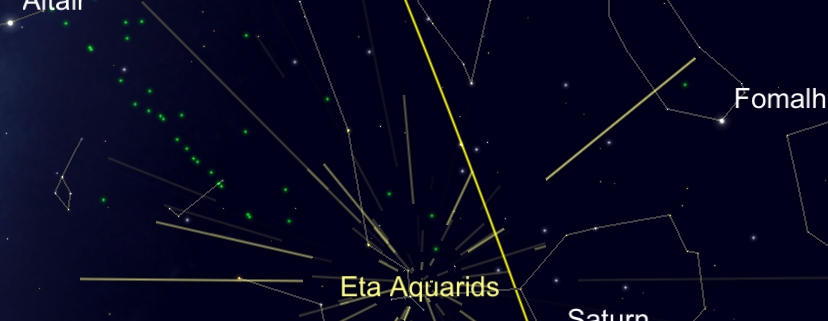
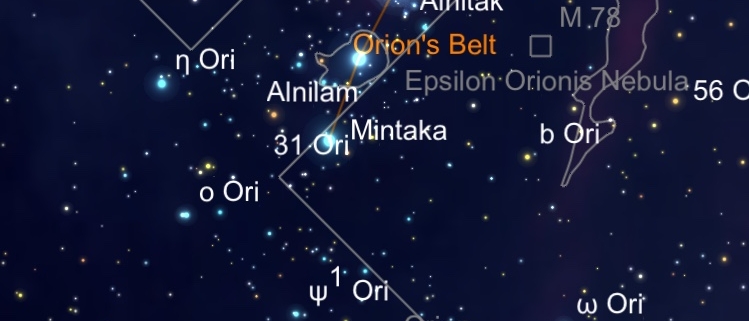
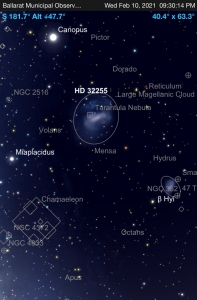
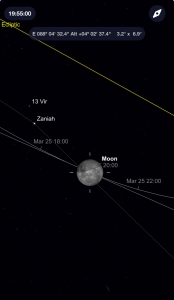
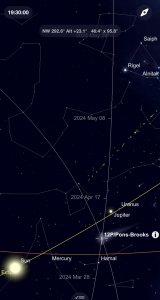 Image April 11th positions.
Image April 11th positions.